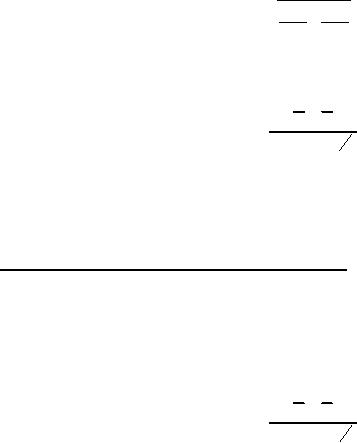
JOTP-011
5 December 2014
APPENDIX G. MARGIN OF SAFETY CALCULATIONS FOR PRESSURE VESSELS
c.
Equating the two formulas G3a and G3b and solving for n results in equation G3.
d. The above procedure cannot be considered more than a plausible reason for equation
G3; however, equation G3 does have the following desirable attributes:
(1) If nx = ny, then nx-y = nx = ny.
(2) If Sx = Sy, then nx-y is the harmonic mean of nx and ny.
(3) nx-y is bound by nx and ny.
(4) If Sx > Sy, then nx-y will be closer to nx, and this is desirable since the larger S has the
greater influence on Sx-y in equation G2. The degrees of freedom for X and Y are:
(s2 s2 )2
x
y
f xy
2
(G4)
S4
S4
y
x
fx 2
fy 2
The differences in pressure in multiples of standard deviations are:
(x y)
K
(G5)
1
[s 2 s 2 ]
2
x
y
From the computed values of equations G3, G4, and G5 and by using the One-Sided Tolerance
Limit tables of values of k for various values of n, the probability of (X-Y)>0 can be determined.
G.5. OPERATING CHARACTERISTICS CURVES.
The operating characteristics curves in Figure G-1 show how the power of the test using the
Tolerance Limit Procedure varies with sample size. The numbers associated with each curve
denote the sample sizes to be used to measure case burst pressure and maximum generated
operating pressure. The abscissa of the figure is the ratio:
(x y)
K
1
[s 2 s 2 ]
2
x
y
This ratio has been used because, for a given sample size, the probability of passing the test
depends on the ratio rather than on the absolute difference between the mean pressures. The
vertical line in the figure is drawn at the criterion level of 4.26489, where the true probability of
case rupture is 1/100,000 with a 90 percent level of confidence.
G-3
For Parts Inquires call Parts Hangar, Inc (727) 493-0744
© Copyright 2015 Integrated Publishing, Inc.
A Service Disabled Veteran Owned Small Business